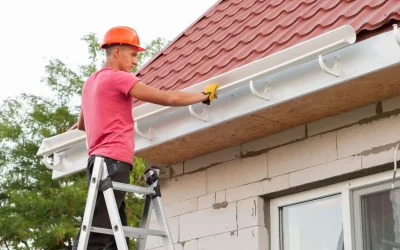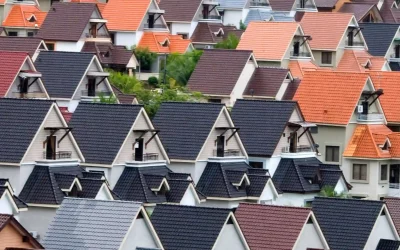When it comes to roofing, many homeowners focus on the big picture: shingles, tiles, and overall aesthetic appeal. However, there’s a crucial element often overlooked that plays a significant role in maintaining the integrity of your roof—roof flashing. Understanding what roof flashing is and why it matters can save you from costly repairs and extend the lifespan of your roof. Let’s dive into the details of roof flashing, its importance, and how it contributes to a well-protected home.
What Is Roof Flashing?
Roof flashing refers to thin pieces of impervious material, typically made of metal, installed to prevent water from seeping into the structure of a building. Flashing is placed around various points of the roof where the roof plane meets a vertical surface, such as walls, dormers, and chimneys, or where the roof changes direction, like valleys and joints. Common materials used for roof flashing include aluminum, copper, galvanized steel, and zinc alloy.
Types of Roof Flashing
There are several types of roof flashing, each designed for specific areas and functions on your roof:
Step Flashing: Used where the roof meets a vertical wall. This flashing is installed in layers with each row of shingles to ensure water is directed away from the wall and down the roof.
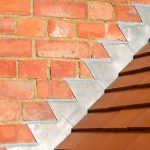
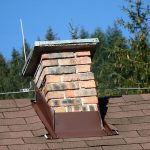
Chimney Flashing: A combination of step flashing and counter flashing that wraps around the base of a chimney to prevent leaks.
Valley Flashing: Placed in the valleys where two roof planes intersect. This flashing directs water down the valley and away from the roof.
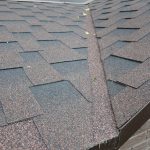
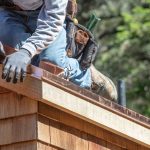
Drip Edge Flashing: Installed along the roof edges to prevent water from getting under the shingles and causing rot.
Vent Pipe Flashing: Placed around vent pipes to seal the area where the pipe penetrates the roof.
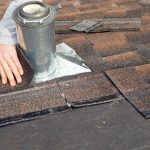
Why Roof Flashing Matters
Roof flashing is essential for several reasons, all of which contribute to the longevity and durability of your roof.
1. Prevents Water Damage
The primary function of roof flashing is to direct water away from vulnerable areas of the roof. Without proper flashing, water can seep into the joints and seams of the roof, leading to leaks and water damage inside your home. Over time, this can result in mold growth, rotting wood, and compromised structural integrity.
2. Protects Against Weather Elements
Flashing acts as a barrier against harsh weather conditions. It helps to seal off gaps and crevices that can be exposed to wind-driven rain, snow, and ice. By effectively sealing these areas, flashing prevents the elements from penetrating the roof and causing damage.
3. Enhances Roof Longevity
A well-flashed roof can significantly extend its lifespan. By preventing water intrusion and protecting against weather elements, flashing reduces the wear and tear on the roofing materials. This means fewer repairs and a longer-lasting roof, saving you money in the long run.
4. Improves Energy Efficiency
Leaks and gaps in your roof can allow air to escape, making your heating and cooling systems work harder to maintain a comfortable temperature inside your home. Proper flashing helps to seal these gaps, improving your home’s energy efficiency and reducing utility bills.
5. Maintains Home Value
A roof in good condition enhances the overall value of your home. Potential buyers are likely to be deterred by signs of water damage or a roof that needs extensive repairs. By ensuring your roof is properly flashed, you maintain the structural integrity and aesthetic appeal of your home, making it more attractive to buyers.
Common Roof Flashing Installation Mistakes
Even though roof flashing is crucial, it’s often improperly installed. Here are some common mistakes to avoid:
- Incorrect Material Choice: Using the wrong material for flashing can lead to corrosion and failure. Always choose the appropriate material for your specific roofing needs and climate.
- Improper Sealing: Failing to properly seal flashing joints can allow water to seep through. Make sure all joints and seams are securely sealed with a high-quality sealant.
- Inadequate Overlapping: Flashing pieces must overlap adequately to direct water away effectively. Insufficient overlap can create gaps for water to penetrate.
- Neglecting Maintenance: Like all parts of your roof, flashing needs regular maintenance. Check for signs of wear and tear and replace damaged flashing promptly to prevent leaks.
DIY vs. Professional Installation of Roof Flashing
While some homeowners may feel confident in tackling minor roofing repairs, roof flashing installation is best left to professionals. Here’s why:
- Expertise: Professional roofers have the knowledge and experience to choose the right materials and install flashing correctly.
- Safety: Roofing can be dangerous, and professionals are trained to handle the risks safely.
- Quality Assurance: Professional installation ensures the job is done right the first time, providing peace of mind and avoiding costly mistakes.
Protect Your Home with Quick Roofing
Roof flashing might not be the most glamorous aspect of your roof, but it is undoubtedly one of the most important. Properly installed and maintained flashing can prevent water damage, protect against harsh weather, enhance your roof’s longevity, improve energy efficiency, and maintain your home’s value. Don’t leave your roof’s protection to chance—ensure your flashing is installed and maintained by professionals.
If you need professional roof work, whether it’s due to storm damage, a new roof installation, or roof repairs, you can count on Quick Roofing. While we specialize in comprehensive roofing services, we also understand the importance of roof flashing and can ensure your entire roofing system is functioning optimally.



